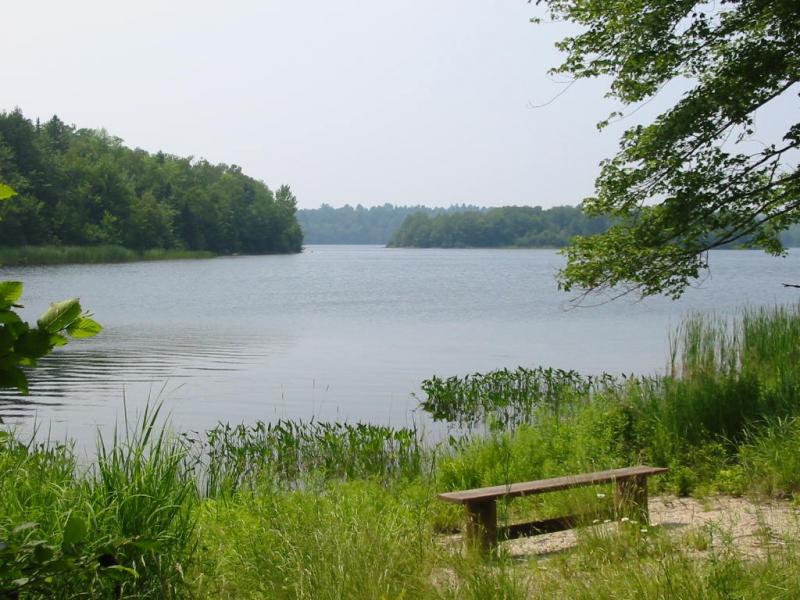Wunderkino 4: Visions of House and Home
15th Annual Northeast Historic Film Summer Symposium in Bucksport, Maine
July 24-July 26, 2014
Just how wondrous film can be, in ways and styles that generally escape attention, is the constant theme of Wunderkino.
That is a three-day event that makes a summer jaunt to Bucksport, Maine, well worth the effort.
The three-day event offers constant surprise in presentations around an annual theme – this year: house, home, and domesticity.
The folks at Northeast Historic Film, the nonprofit organization that holds the event, conceive of wunderkino as “wonder-cinema” — “moving images that ignite our curiosity and engagement” and that provoke a rethink of how film can work in whatever form it comes, and particularly in its less broadly publicized and familiar amateur and non-commercial varieties.
At the multi-disciplinary gathering devoted to the history, theory, and preservation of amateur and nontheatrical moving images, a friendly group of archivists, scholars, artists, and in fact anyone interested in the presentations, screenings, and discussions seek to address questions that organizers pose.
The overarching question this year is: What insights to amateur and non-theatrical films offer into daily life, domesticity, and the quotidian activity that has often been dismissed as mise en scène?
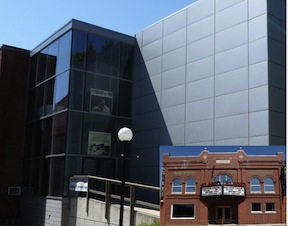
Northeast Historic Film and the Alamo cinema, Bucksport, Maine. Photo: bucksportmaine.gov
More simply put, that breaks down to such queries as: What activities define house and home on film? How do notions and conventions of home frame regions, communities, and people in amateur films, industrial films, and educational films? How does the performance of domesticity size or resize the frame?
The event, which makes use of a 125-seat cinema with 35mm, 16mm, video, and DVD projection, continues a tradition of NHF summer symposiums that is 15 years old and counting and is well-regarded: in 2013 Northeast Historic Film received the Silver Light Award from the Association of Moving Image Archivists for significant contributions to the field.
The meeting’s setting adds to its appeal: Bucksport is a town of 5,000 on the coast of Maine. Learn more. To attend, first register through the NHF website.
Amateur Film/Amateur Video: Transatlantic Collision, Correlation, and Theory — Graeme Spurr (University of Glasgow) presents three views of amateur film and video: in the 1950s, on opposite sides of the Atlantic, two amateur film institutions professed differing visions of their medium; in the late 1960s, disparagement of amateur film and video resembled opinions on new technologies, in general; in the late 1980s, the Lalumiere Home Movie and Archie Stewart collections illustrated video theorist James Moran’s taxonomy of the ‘home-mode’ for the magnetic medium.
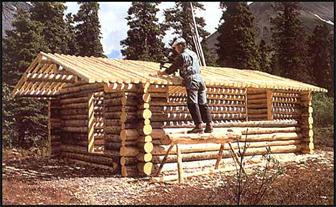 How to Build a Home: Dick Proenneke’s Experimental Domesticity — Oliver Gaycken (University of Maryland) considers the widely distributed amateur/natural-history/experimental film that Dick Proenneke made of the wilderness life he led in Alaska from 1967 for 30 years, and of his amateur observations of weather and wildlife.
How to Build a Home: Dick Proenneke’s Experimental Domesticity — Oliver Gaycken (University of Maryland) considers the widely distributed amateur/natural-history/experimental film that Dick Proenneke made of the wilderness life he led in Alaska from 1967 for 30 years, and of his amateur observations of weather and wildlife.
The Dig House: Amateur Film as Artifact – Michael McCluskey (University College London) presents John Pendlebury’s pioneering use of film in archaeology at an excavation site in Egypt, 1930-1933. Pendlebury, the 26-year-old director of the dig, filmed the work, administrative interactions, and social setting of the dig house – interactions among archaeologists, artifacts, British subjects, local cultures, modernity, and antiquity. Says McCluskey: “These films, I contend, can help us to further our understanding of amateur film as social practice and cultural artifact.
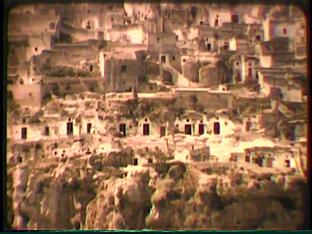 Life and Death of a Cave City: Documenting the Failures of a Futurist Society — Brian Real (University of Maryland) presents one of the few Marshall Plan films shot in color, one that disorients with its images of fine Italian architecture and narration about the devastation of post-war life in Matera, later setting for various films including Pasolini’s Gospel According to Saint Matthew.
Life and Death of a Cave City: Documenting the Failures of a Futurist Society — Brian Real (University of Maryland) presents one of the few Marshall Plan films shot in color, one that disorients with its images of fine Italian architecture and narration about the devastation of post-war life in Matera, later setting for various films including Pasolini’s Gospel According to Saint Matthew.
The Home of the Future in the World of Tomorrow — Caitlin McGrath (University of Maryland) discusses therole offilm in presenting the house and domestic sphere of the future at the 1939 New York World’s Fair.
The Viking Video Productions Collection: Constructing Visions of Maine’s Rural Identity — Gemma Scott (University of Maine) presents Viking Video Productions, the second high-school vocational program of its kind in Maine. It flourished for a decade, producing award-winning short films and providing hands-on media-production experience to a generation of students in the face of a lack of support for an innovative teaching method.
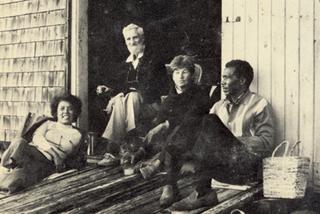 Conversations in Maine: The Schoolhouse on Sutton Island — Brian Graney (Black Film Center, Indiana University) presents film that Frances Reid (Long Night’s Journey into Day) captured of the community, environment, domestic activities, and impassioned discussions at “the Schoolhouse” on Sutton Island, Maine, during the summer of 1987, two decades into its hosting radical activists, community organizers, artists, and scholars.
Conversations in Maine: The Schoolhouse on Sutton Island — Brian Graney (Black Film Center, Indiana University) presents film that Frances Reid (Long Night’s Journey into Day) captured of the community, environment, domestic activities, and impassioned discussions at “the Schoolhouse” on Sutton Island, Maine, during the summer of 1987, two decades into its hosting radical activists, community organizers, artists, and scholars.
Home on the Plantation: Rural Mississippi Home Movies and Life Beyond the Family — Ashley Smith (Stockholm University) presents amateur films held in the Lytle Collection and the Gary Collection at the University of Mississippi archives that capture the gradual shift to mechanization on Delta cotton farms during the late 1930s and early 1940s. Amid the transition from sustainable manual and mule-driven labor to the tilling, sewing, digging, and threshing of machines, “home” was redefined, Smith argues.
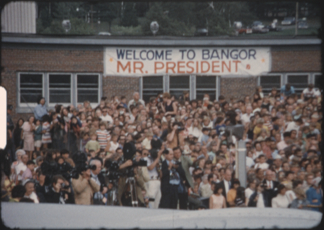 Working in the “People’s House”: The Nixon Staff Super-8 Collection — Katrina Dixon (independent archival researcher) & Brian L. Frye University of Kentucky College of Law) discuss the 500+ rolls of Super-8 home movies that Nixon aides H.R. Haldeman, John Ehrlichman, and Dwight Chapin made between 1969 and 1973. (See “Our Nixon is Probably Not Your Nixon“.
Working in the “People’s House”: The Nixon Staff Super-8 Collection — Katrina Dixon (independent archival researcher) & Brian L. Frye University of Kentucky College of Law) discuss the 500+ rolls of Super-8 home movies that Nixon aides H.R. Haldeman, John Ehrlichman, and Dwight Chapin made between 1969 and 1973. (See “Our Nixon is Probably Not Your Nixon“.
“I Might Recommend Installing A Peephole”: Navigating the Space of Home in Law Enforcement Training Films — Travis Wagner (University of South Carolina) presents training films on traffic regulations, testifying in court, and much else that may be endearing or problematic — and how have police been trained to enter homes of people good and naughty?
Father Knows Best: The Home as the Complete Archive — Dino Everett (University of Southern California) says don’t diss the home-film archivist: “Large film archives have existed in their own little bubble for so long that it is hard for them to imagine that others have been doing it even longer. But all archives can learn a great deal from the amateur who has always put equal emphasis on the equipment as on the films” including splicers, printers, perforators, and splitters that they created to shoot, duplicate, and preserve their films.
— Northeast Historic Film press materials
Previous Post: The War Films of Indiana
Next Post: New Books on Moving Images and Archiving

